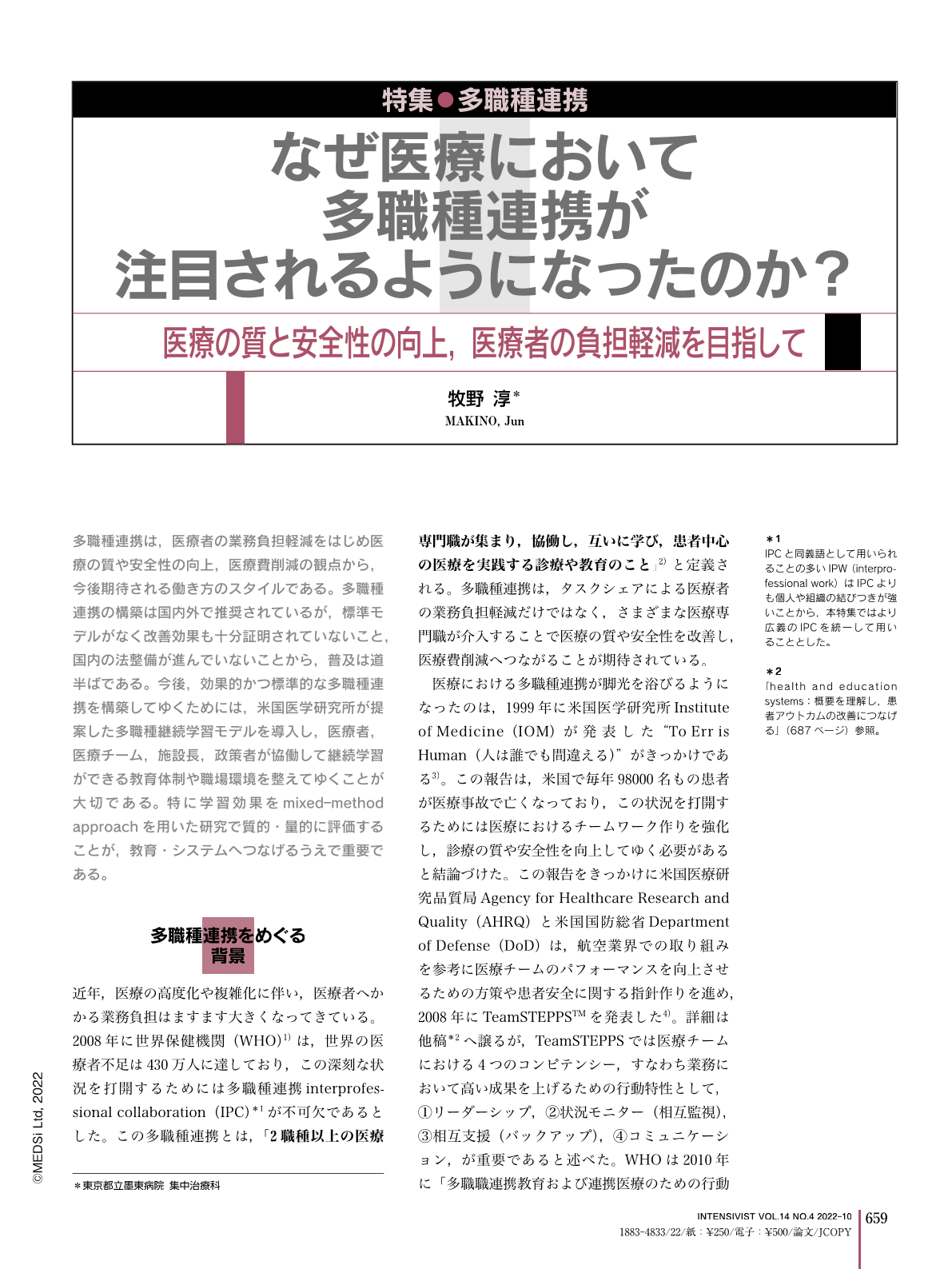Japanese
English
- 有料閲覧
- Abstract 文献概要
- 1ページ目 Look Inside
- 参考文献 Reference
多職種連携は,医療者の業務負担軽減をはじめ医療の質や安全性の向上,医療費削減の観点から,今後期待される働き方のスタイルである。多職種連携の構築は国内外で推奨されているが,標準モデルがなく改善効果も十分証明されていないこと,国内の法整備が進んでいないことから,普及は道半ばである。今後,効果的かつ標準的な多職種連携を構築してゆくためには,米国医学研究所が提案した多職種継続学習モデルを導入し,医療者,医療チーム,施設長,政策者が協働して継続学習ができる教育体制や職場環境を整えてゆくことが大切である。特に学習効果をmixed-method approachを用いた研究で質的・量的に評価することが,教育・システムへつなげるうえで重要である。
Interprofessional collaboration is a style of work that is expected in the future from the perspective of reducing the workload of medical staff, improving the quality and safety of medical care, and subsequently reducing medical expenses. Although interprofessional collaboration is recommended both in Japan and other countries, evidence to support its widespread use has not been established for the following reasons. First, there is no standard model. Second, improvement from its use has not been sufficiently demonstrated. Third, domestic legal development has not progressed. To build effective and standard interprofessional collaboration, medical staff, medical teams, facility directors, and policy makers should collaborate and establish an educational system and work environment that smoothly enables an interprofessional learning continuum model. In particular, a mixed-method approach should be used for clinical research to qualitatively and quantitatively evaluate the learning effect and to connect clinical results to education and systems.

Copyright © 2022, MEDICAL SCIENCES INTERNATIONAL, LTD. All rights reserved.


